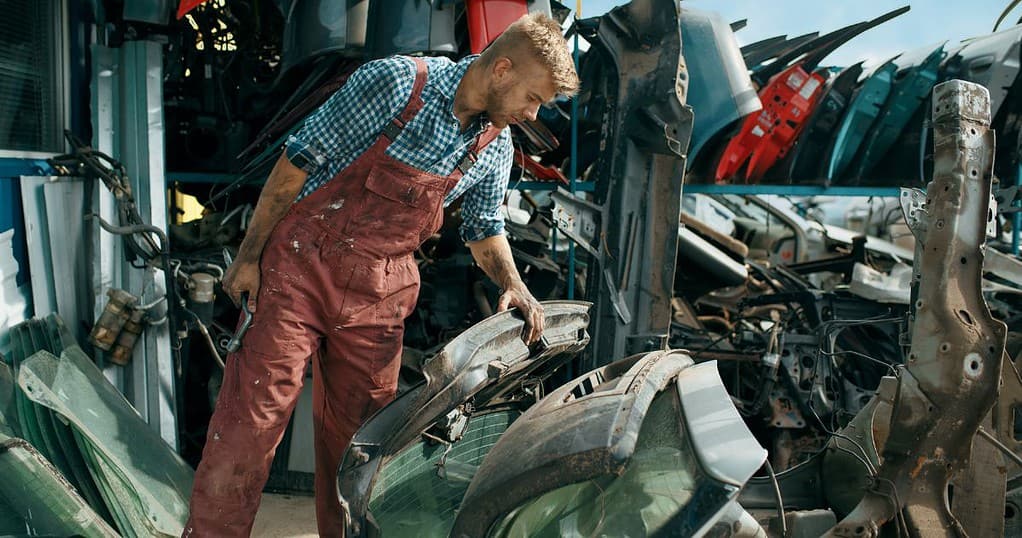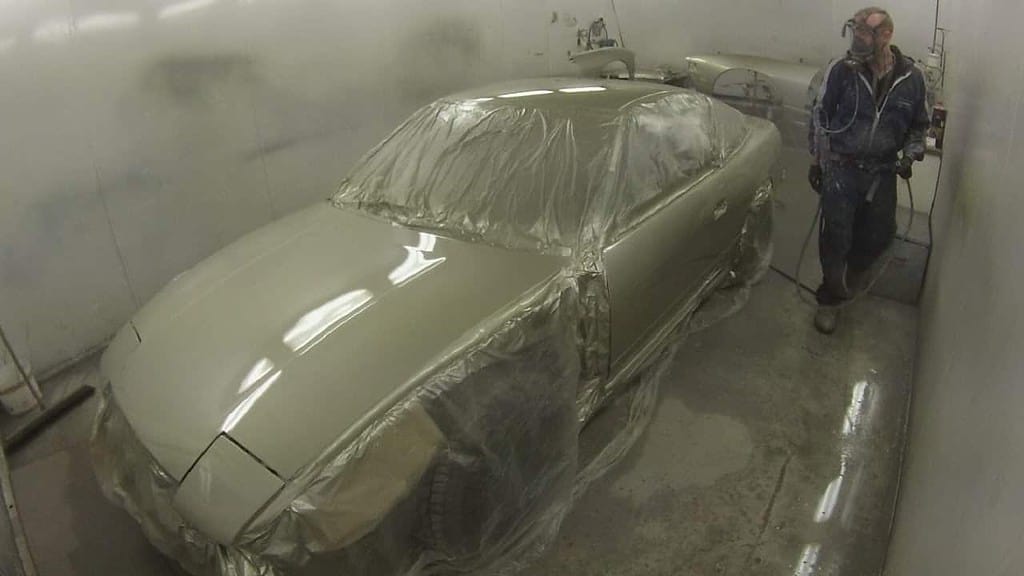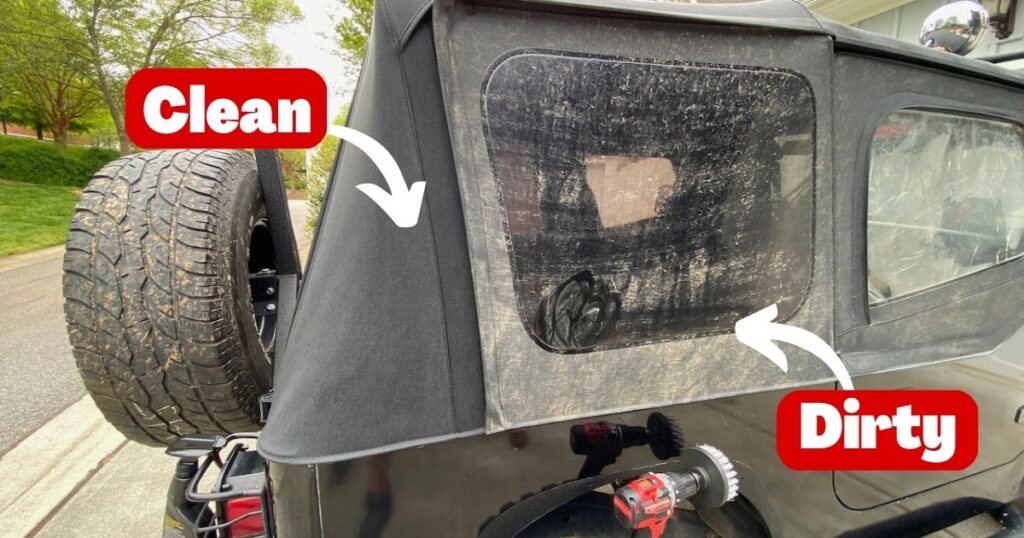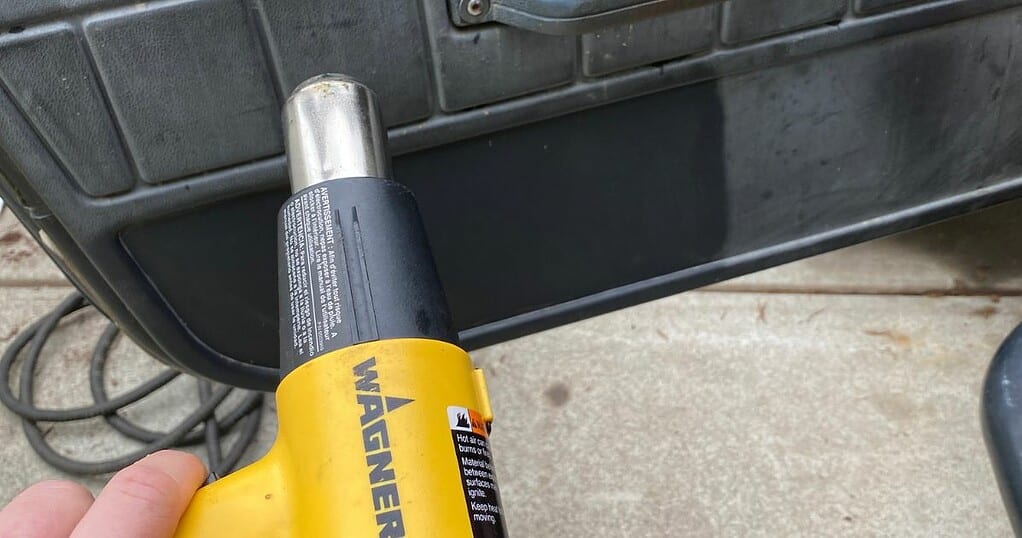Restoring a Used Car: Tips and Tricks for a Successful Project
Restoring a used car is a great way to save money and breathe new life into an old vehicle. Whether you’re a car enthusiast or just looking to extend the life of your car, restoring a used car can be a rewarding and cost-effective endeavor. While it may seem daunting at first, with the right tools, knowledge, and patience, (almost) anyone can restore a used car.

The first step in restoring a used car is to assess the vehicle’s condition. This includes inspecting the body, interior, engine, and other mechanical components.
Once the assessment is complete, a plan can be developed to address any issues and restore the car to its former glory. This may involve replacing or repairing parts, repainting the exterior, and detailing the interior.
Restoring a used car can be a time-consuming process, but the end result is well worth the effort. Not only will the car look and run like new, but it can also be a source of pride and enjoyment for years to come. With the right approach and a commitment to quality workmanship, anyone can restore a used car and enjoy the benefits of a beautiful, reliable vehicle.
Assessing the Condition of the Car
Before starting the restoration process, it is crucial to assess the condition of the car. Here are some steps to follow:
- Inspect the body and frame for rust, dents, and scratches. Look for signs of previous accidents or repairs.
- Check the engine and transmission for leaks, wear, and damage. Make sure all the fluids are at the proper levels.
- Test the brakes, steering, and suspension to ensure they are functioning correctly.
- Inspect the electrical system, including the battery, alternator, and wiring, for any issues.
- Check the interior for wear and tear, including the seats, dashboard, and carpeting.
Based on your inspection, make a list of all the necessary repairs and replacements. It’s essential to prioritize the repairs based on safety and functionality first.
If the car has significant damage or rust, it may not be worth restoring. It’s important to weigh the cost of repairs against the value of the car before starting the restoration process.
Section 3: Creating a Restoration Plan
Restoring a used car can be a daunting task, but with a well-planned restoration plan, it can be a fulfilling experience. Here are a few steps to create a restoration plan:
- Assess the Condition of the Car: Before starting the restoration process, it is essential to assess the condition of the car. This includes checking the body, engine, transmission, suspension, and other parts of the car. Make a list of all the repairs and replacements required.
- Set a Budget: Restoring a car can be expensive. Setting a budget helps to determine the extent of the restoration and prioritize the repairs and replacements required.
- Choose the Restoration Level: There are different levels of restoration, including driver restoration, show restoration, and concours restoration. Choose the level of restoration that suits your needs and budget.
- Create a Timeline: Restoring a car can take several months or even years. Creating a timeline helps to track the progress of the restoration and ensures that it is completed on time.
- Choose the Right Parts: Choosing the right parts is crucial for a successful restoration. Decide whether to use original parts, reproduction parts, or aftermarket parts.
- Document the Restoration Process: Documenting the restoration process helps to track the progress and serves as a reference for future repairs and maintenance.
By following these steps, you can create a restoration plan that helps to restore your used car to its former glory.
Sourcing Parts and Materials
Restoring a used car requires sourcing parts and materials that are essential to bringing the vehicle back to life. The task can be daunting, but with a little research and patience, you can find the parts you need to complete the restoration project. Here are some tips on how to source parts and materials for your used car restoration:
- Research: Before you start sourcing parts, do your research. Find out what parts you need, and where you can find them. Check online forums, classic car clubs, and auto parts stores for information on where to find the parts you need.
- Online: The internet is a great resource for finding parts and materials for your used car restoration. Online marketplaces like eBay, Amazon, and Craigslist can be a great place to find rare or hard-to-find parts.
- Junkyards: Junkyards can be a treasure trove of parts for your used car restoration. Take a trip to your local junkyard and see what parts you can find. You can often find parts for a fraction of the cost of new parts.
- Auto Parts Stores: Auto parts stores can be a great place to find new parts for your used car restoration. Many auto parts stores carry parts for older vehicles, and can special order parts if they don’t have them in stock.
- Specialty Shops: If you’re looking for high-quality, hard-to-find parts, consider shopping at a specialty shop. Specialty shops often carry parts for specific makes and models of cars, and can offer expert advice on restoring your vehicle.
Sourcing parts and materials is an essential part of restoring a used car. With a little research and patience, you can find the parts you need to complete your restoration project. Whether you’re shopping online, visiting junkyards, or shopping at specialty shops, there are many options available to help you find the parts you need.
**Expert Tip: Facebook enthusiast groups, eBay, Craigslist and Facebook Marketplace are a few great sources for finding used and hard-to-find car parts.

Section 5: Disassembly and Cleaning
Before restoring a used car, it is important to disassemble and clean it thoroughly. This process helps to identify any damages or issues that need fixing and ensures that the car is ready for restoration. Here are the steps to follow:
- Start by removing all the parts that can be easily detached, such as the seats, carpets, and headliner. This will give you more access to the car’s body and make it easier to clean.
- Next, remove the doors, hood, and trunk lid. This will make it easier to access the engine and other parts that need cleaning and restoration.
- Use a pressure washer or a hose to remove any dirt, grime, and rust from the car’s body. Pay special attention to the areas around the wheel wells, under the car, and in the engine compartment.
- Use a degreaser to remove any oil, grease, or other contaminants from the engine and other parts. This will make it easier to identify any leaks or damages that need fixing.
- Inspect the car’s body for any damages, such as dents, scratches, or rust. Make note of these damages so that you can fix them during the restoration process.
- Inspect the engine and other parts for any damages or issues that need fixing, such as worn-out belts, hoses, or spark plugs.
- Clean all the parts that you removed, such as the seats, carpets, and headliner. Use a vacuum cleaner, a steam cleaner, or a special cleaning solution to remove any dirt, stains, or odors.
By following these steps, you can disassemble and clean your used car thoroughly, identify any damages or issues that need fixing, and prepare it for the restoration process.
Section 6: Repairing and Replacing Parts
When restoring a used car, repairing and replacing parts is an essential step. It’s important to inspect each part and determine whether it can be fixed or if it needs to be replaced entirely. Here are some tips on how to approach this process:
- Inspect each part carefully to determine its current condition.
- Research the cost of replacement parts to determine if it’s more cost-effective to repair or replace.
- Consider the age and condition of the car when deciding which parts to replace.
- Look for high-quality replacement parts to ensure the longevity of your car.
Some common parts that may need to be repaired or replaced during a restoration project include:
| Part | Reason for Repair/Replacement |
|---|---|
| Brakes | Worn down or damaged brake pads, rotors, or calipers can compromise safety and performance. |
| Suspension | Worn out shocks, struts, or other suspension components can affect handling and ride quality. |
| Engine | Older engines may need to be rebuilt or replaced entirely to ensure optimal performance. |
| Transmission | Worn out or damaged transmissions can cause shifting problems and affect overall performance. |
Overall, it’s important to take a thorough and thoughtful approach when repairing and replacing parts during a restoration project. By doing so, you can ensure the safety, performance, and longevity of your car for years to come.
Section 7: Painting and Refinishing
Painting and refinishing is an essential part of restoring a used car. It not only enhances the car’s appearance but also protects it from environmental factors such as rust, corrosion, and fading. Here are a few things to keep in mind when painting and refinishing your car:
- Preparation is key: Before starting the painting process, make sure to clean the car thoroughly and remove any rust or old paint. Sanding the surface will help the new paint adhere better.
- Choose the right paint: Select a high-quality paint that will last for a long time. Consider factors such as the color, finish, and durability of the paint.
- Use proper equipment: To achieve a smooth and even finish, it’s important to use the right equipment such as a spray gun, compressor, and paint booth. Make sure to follow the manufacturer’s instructions for best results.
- Apply multiple coats: Applying multiple thin coats of paint will give a better finish than one thick coat. Allow each coat to dry completely before applying the next one.
- Protect the paint: Once the painting process is complete, protect the new paint by applying a clear coat or wax. This will help to prevent fading and protect the paint from scratches and other damage.
By following these tips, you can achieve a professional-looking finish and protect your car’s paint for years to come.

Reassembly and Final Touches
After all the parts have been cleaned, repaired, and painted, it’s time to put them back together. Reassembly can be a bit tricky, especially if you have parts from different years or models. Make sure you have a detailed diagram or manual to guide you through the process.
Start by reattaching the engine and transmission to the frame. Then, install the suspension components and brake system. Once the car is back on its wheels, you can begin installing the interior components, such as the seats, dashboard, and carpeting.
It’s important to take your time during reassembly to ensure everything is properly aligned and tightened. Double-check all connections and fasteners to avoid any potential issues down the road.
Once the car is fully reassembled, it’s time for the final touches. This includes installing any remaining exterior trim pieces, such as the door handles and emblems. You may also want to add custom touches, such as a new grille or aftermarket wheels.
Finally, give the car a thorough cleaning and waxing to bring out its shine. Take it for a test drive to ensure everything is working properly and enjoy the satisfaction of restoring a used car to its former glory.
Section 9: Testing and Troubleshooting
After restoring a used car, it is essential to test and troubleshoot it thoroughly to ensure that everything works correctly. Here are some essential steps to follow:
- Check all the lights, including the headlights, brake lights, and turn signals, to ensure they are working correctly.
- Test the brakes to make sure they are not spongy and are working correctly. Also, check the brake pads and rotors for wear and tear.
- Inspect the suspension and steering system for any issues, such as worn-out bushings or damaged ball joints.
- Check the engine oil, coolant, and transmission fluid levels to ensure they are at the recommended levels.
- Test the battery and alternator to ensure they are charging correctly and holding a charge.
If you encounter any issues during the testing process, it is essential to troubleshoot and fix them before driving the car. Here are some common problems and their solutions:
| Problem | Solution |
|---|---|
| The engine is not starting. | Check the battery, starter, and alternator. If they are all working correctly, the issue may be with the spark plugs or fuel system. |
| The car is overheating. | Check the coolant level and the radiator for any leaks. Also, inspect the thermostat and water pump for any issues. |
| The brakes are spongy. | Check the brake fluid level and bleed the brakes to remove any air bubbles. If the issue persists, there may be a problem with the brake lines or master cylinder. |
By following these steps and troubleshooting any issues that arise, you can ensure that your restored car is safe and reliable to drive.
My Take On Restoring or Reconditioning A Used Car

I love fixing up older vehicles. It is a passion of mine. I have a small fleet of old SUVs, and everywhere I go, I am always looking behind houses to see if I see anything cool to try and buy to restore.
However, many, if not most, true restoration projects are not money-makers. This is because the person restoring the vehicle is doing it for personal pleasure as opposed to a restoration business and will look at it from a profit/loss standpoint.
This being said, reconditioning a used vehicle is the perfect way to instantly add value to a tired used vehicle that is still in decent but not great shape. Put in a little sweat equity and you can not only have a fun vehicle to drive, but you may actually turn a profit when you eventually look to sell.
If you can do a full tune-up to a car, compound and polish the paint, and deep clean the interior, and then you are happy with the outcome, that’s the way I would suggest most people go when reconditioning a car versus doing a proper restoration of a vehicle. This is essentially what used car dealers do to enhance the sales price of their vehicles.

Conclusion
Restoring a used car can be a challenging and rewarding experience. It requires time, effort, and patience, but the end result can be a beautiful and reliable vehicle that you can be proud to own and drive.
Throughout this article, we have covered the essential steps involved in restoring a used car, including assessing the condition of the car, creating a restoration plan, disassembling and repairing the car, and reassembling and finishing the car.
Remember, the key to a successful restoration is to take your time, be thorough, and pay attention to detail. Don’t rush the process, and don’t cut corners. If you do, you may end up with a car that looks good on the surface but has hidden problems that could lead to costly repairs down the road.
Whether you’re restoring a classic car or a more modern vehicle, the principles are the same. Take care of the basics, such as the engine, transmission, and suspension, and then focus on the details, such as the interior, paint, and trim. With the right tools, knowledge, and patience, you can restore a used car to its former glory and enjoy it for years to come.
